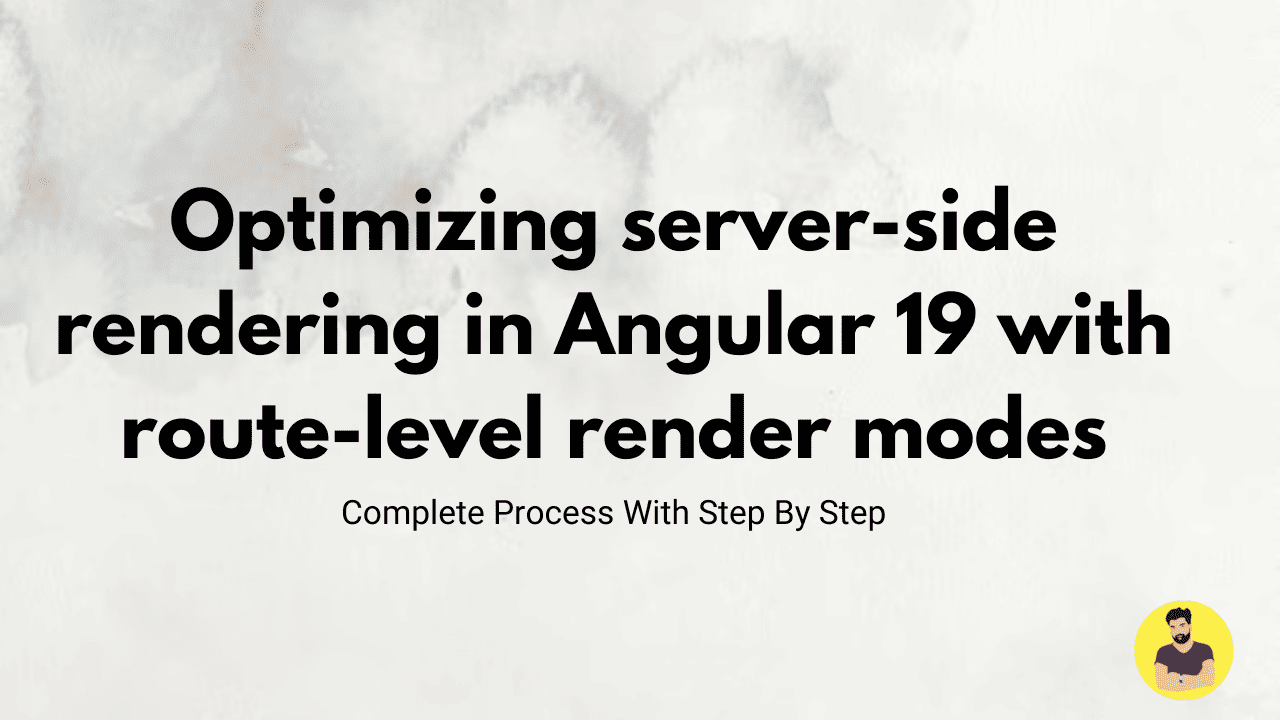
Optimizing server-side rendering in Angular 19 with route-level render modes
Server-Side Rendering (SSR) in Angular improves performance, SEO, and faster page loads. With Angular 19, route-level render modes allow fine-tuned control over rendering. This guide explains how to optimize SSR using "full", "shell", and "no-ssr" render modes.
Step 1: Set Up Angular SSR
- Generate an SSR project with Angular Universal:
ng new my-angular-ssr-app --ssr
cd my-angular-ssr-app
Add Angular Universal if upgrading an existing project:
ng add @angular/platform-server
Update angular.json to enable SSR:
"server": {
"builder": "@angular-devkit/build-angular:server",
"options": {
"outputPath": "dist/my-angular-ssr-app-server",
"main": "src/main.server.ts"
}
}
Step 2: Configure Route-Level Render Modes
- Open
app.config.tsand enable SSR modes:
import { ApplicationConfig } from '@angular/core';
import { provideRouter, withComponentInputBinding } from '@angular/router';
export const appConfig: ApplicationConfig = {
providers: [
provideRouter(
[
{ path: '', component: HomeComponent, data: { renderMode: 'full' } },
{ path: 'dashboard', component: DashboardComponent, data: { renderMode: 'shell' } },
{ path: 'profile', component: ProfileComponent, data: { renderMode: 'no-ssr' } }
],
withComponentInputBinding()
)
]
};
- Render Modes Explained:
"full": The page fully renders on the server (best for SEO)."shell": The initial UI loads on the server, but data loads on the client."no-ssr": The page loads only on the client (for real-time dashboards).
Step 3: Optimize Performance for SSR
- Use Lazy Loading for Routes:
const routes: Routes = [
{ path: '', loadComponent: () => import('./home/home.component').then(m => m.HomeComponent), data: { renderMode: 'full' } }
];
const routes: Routes = [
{ path: '', loadComponent: () => import('./home/home.component').then(m => m.HomeComponent), data: { renderMode: 'full' } }
];
Enable TransferState API to cache API responses between SSR and client:
import { TransferState, makeStateKey } from '@angular/platform-browser';
const DATA_KEY = makeStateKey('data');
this.http.get('/api/data').subscribe(data => {
this.state.set(DATA_KEY, data);
});
Reduce Unnecessary Rendering by deferring non-critical components:
@Component({
selector: 'app-dashboard',
template: `<ng-container *ngIf="isBrowser"> <app-heavy-component></app-heavy-component> </ng-container>`
})
Step 4: Deploy and Test SSR Performance
- Build the SSR Application:
npm run build:ssr
npm run serve:ssr
- Test SSR performance using Lighthouse or PageSpeed Insights.
- Monitor hydration issues and adjust render modes accordingly.
Conclusion
Route-level render modes in Angular 19 provide better performance control for SSR applications. By leveraging "full", "shell", and "no-ssr" modes, you can improve SEO, optimize initial load times, and balance rendering performance. Fine-tune SSR for different pages to create a faster, scalable web application. 🚀
Related Tutorials
Laravel Implement Flash Messages ExampleHow to integrate Angular 19 with Node.js and Express for full-stack development
Best practices for connecting Angular 19 frontend with Laravel API
Step-by-step guide to upgrading an existing project to Angular 19
How to implement authentication in Angular 19 using JWT and Firebase
Optimizing server-side rendering in Angular 19 with route-level render modes
Using Angular 19 signals for state management in large applications
How to create standalone components in Angular 19 for modular architecture
Building a CRUD application in Angular 19 with MongoDB and Express
Implementing lazy loading in Angular 19 to improve performance
How to integrate Angular 19 with GraphQL for efficient data fetching
Mastering Angular and Express.js for Full-Stack Web Development